1. The White House’s Art Collection is Priceless
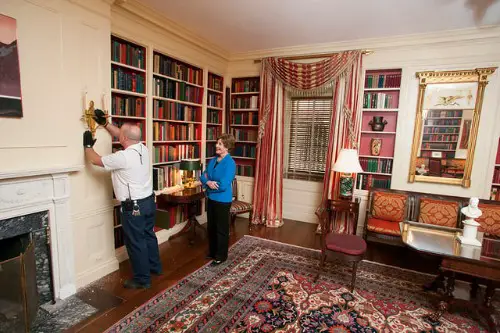
A visit to the White House isn’t just about the architecture or the history; it’s also about the art that decorates its walls. The White House boasts a staggering collection of over 4,500 works of art, ranging from portraits of past presidents to sculptures, paintings, and decorative pieces representing different periods of American history. Many of these works are gifts from foreign dignitaries or purchased specifically to enhance the presidential residence. According to the White House Historical Association, the collection is always growing and changing with the times.
The collection is carefully curated to reflect the diverse culture of the United States. Notable pieces include Gilbert Stuart’s famous portrait of George Washington and several works by contemporary American artists. The White House’s art collection is constantly updated to reflect the current administration’s style and interests, and it serves as a visual narrative of America’s evolving identity. These works of art not only tell stories of the past but also reflect the current political and cultural climate.
2. Secret Tunnels and Bunkers Underneath
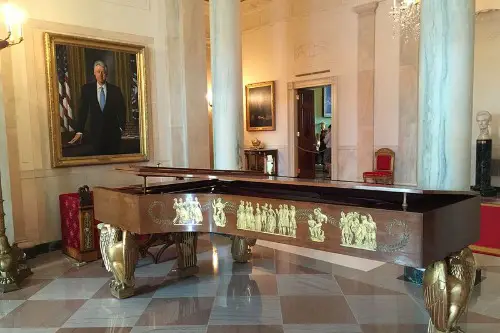
While the White House may seem like just a grand residence on the surface, it also has its share of hidden secrets. Beneath its stately exterior lies a complex network of offices and bunkers, designed with national security in mind, The White House Historical Association confirms. One of the most famous features is the underground bunker known as the Presidential Emergency Operations Center (PEOC), which is used in times of crisis. These tunnels connect various parts of the White House and are designed to protect the president and key staff in case of an emergency, such as a terrorist attack or national disaster.
What’s even more intriguing is that these tunnels date back to the Cold War. While the current version of the PEOC was built after the 9/11 attacks, the concept of underground protection was born much earlier. It’s a chilling thought, but during moments of extreme tension, the White House transforms into a fortress. These hidden spaces remind us that the people living in the White House are often in the midst of high-stakes decisions that could affect the fate of the nation—and the world.
3. The White House Has a Full-Time Medical Team

One of the most critical functions of the White House is the protection of the president’s health. That’s why the White House has a full-time medical team, led by a physician who is assigned to care for the president and their family. This includes routine checkups, emergency care, and any medical procedures that might be required on short notice. It’s not just about physical health—psychological health is a priority, too, especially given the immense stress and pressure the president faces. If you’re worried about the health of the first family, you can check the Presidential Healthcare Center’s page.
The White House Medical Unit was established in 1898, and since then, it has been a pivotal part of the White House’s operations. The president’s physician is often a military doctor who reports directly to the White House, ready to handle any medical crisis that may arise. In fact, the medical team has had to deal with everything from routine flu symptoms to more serious health emergencies, including heart attacks and even surgery. The presence of this medical team ensures that the president’s health remains a top priority, even in the midst of a busy schedule.
4. The White House Is Not Just a Residence—It’s a Workplace
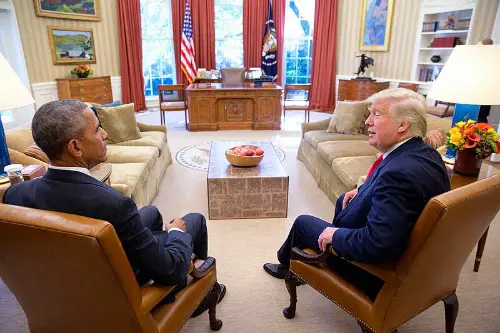
Most people think of the White House as simply the president’s home, but it’s much more than that—it’s also the primary workplace for the president and their staff. The Oval Office, for instance, is not just a symbolic location; it’s where most presidential decisions are made. From signing bills to meeting with foreign dignitaries, this is the room where history unfolds on a daily basis.
Beyond the Oval Office, the White House also contains dozens of offices for staff, advisors, and security personnel. The West Wing, for example, houses the offices of the president’s senior advisors, the press secretary, and the vice president. It’s a complex operation that goes far beyond the first family’s daily routine. Everyone working in the White House plays a crucial role in making sure the wheels of government keep turning, from policy advisors to security personnel keeping the entire operation secure.
5. The White House is a Living Piece of American History
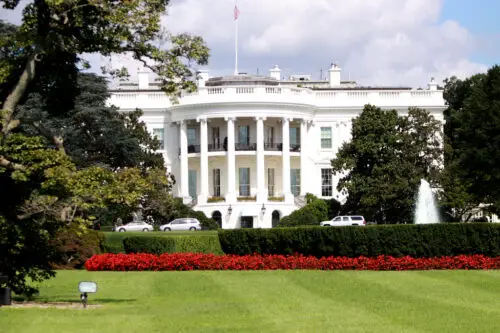
When you step into the White House, you’re not just entering a residence; you’re walking through the corridors of American history, and in addition to visiting, you can read about it on The White House’s official site. Every inch of this iconic building tells a story about the country’s journey through war, peace, and leadership. Did you know that the White House is over 200 years old? Since its completion in 1800, it has been the home of every U.S. president except George Washington. It’s not just a house; it’s a living museum where every room is steeped in historical significance.
Take, for example, the iconic Resolute Desk in the Oval Office. It was a gift from Queen Victoria to President Rutherford B. Hayes in 1880, and since then, it’s become one of the most recognizable symbols of the presidency. Over the years, presidents have sat at that desk, contemplating some of the most significant decisions in U.S. history, such as the Civil Rights Act and the end of the Cold War. This connection to the past gives the White House a unique, almost reverential air—a reminder that leadership is about both the present and the history that led to it.
6. The White House Has Its Own Bakery
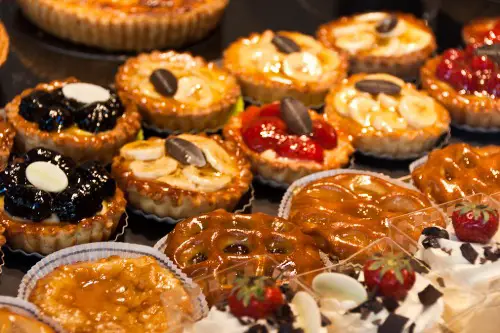
One of the more delicious aspects of life in the White House is its bakery, which serves up treats for both the first family and visitors. The White House kitchen is a well-oiled machine, with chefs and bakers on hand to prepare everything from daily meals to grand state dinners. Among the more popular items produced by the White House bakery are traditional desserts, like pies, cakes, and cookies, which are often served at events or during private family meals. All the delicious treats are overseen by the Executive Pastry Chef, currently chef Susan Morrison, who holds the position since 2014, announced by the Obama White House.
Baking at the White House goes beyond just satisfying a sweet tooth; it’s also part of a larger tradition of hospitality. During state dinners, for example, the White House prepares elaborate desserts that represent the flavors of the guest nation. This blend of international flair and American tradition ensures that guests feel welcome and celebrated while also experiencing a taste of the United States’ culinary history. The White House bakery is a behind-the-scenes institution that adds a personal touch to every meal and event.
7. The White House Has a Secret Service Detail

When you live in the White House, security is paramount. This is why the United States Secret Service is tasked with the security of the president and the first family, 24 hours a day, 7 days a week. The Secret Service not only protects the president but also manages the safety of visiting foreign dignitaries and anyone attending events at the White House.
The level of security around the White House is unmatched, with multiple layers designed to prevent any potential threats. This includes armed guards, surveillance systems, and advanced technology to detect explosives or other dangerous materials. The Secret Service also helps plan secure travel routes for the president and can deploy agents to handle any situation—whether that means crowd control or dealing with potential threats in real-time. Their constant vigilance ensures that the first family remains safe, even in the most uncertain times.
8. The White House Has Its Own Dog Kennel
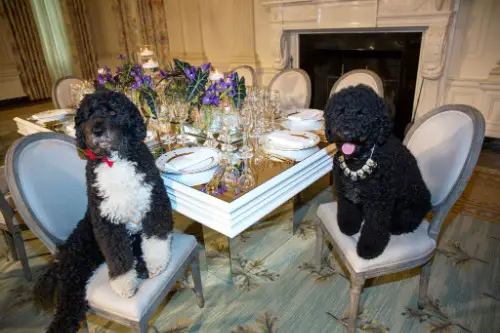
While the first family is busy running the country, it’s nice to know that they can enjoy some downtime with their pets. Over the years, many presidents have kept dogs as pets while living in the White House, and as a result, the White House has a dedicated dog kennel. The kennel is designed to provide a comfortable space for the family dogs, ensuring they’re well taken care of while the family is preoccupied with their duties.
One of the most famous first pets was Bo Obama, a Portuguese Water Dog who lived with the Obama family during their time in the White House. Bo even had his own press coverage and was often seen playing on the White House lawn. Having pets in the White House adds a sense of normalcy and comfort for the first family, especially amidst the pressure of high-level politics. These pets also often serve as a reminder of the simple pleasures in life, even for the most powerful people in the world.
9. The White House Has a Private Movie Theater
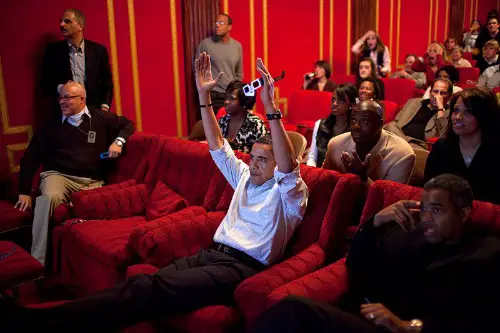
Not all of White House life is about policy and meetings. For relaxation, the White House boasts a private movie theater, which was added in the 1940s by President Franklin D. Roosevelt. This theater, which is located in the basement of the White House, is a favorite escape for the first family when they need a break from the pressures of office. It’s also used for screening movies before their release to the public.
The theater is equipped with state-of-the-art technology and comfortable seating, making it an ideal place for the president and their family to unwind. Over the years, many presidents have enjoyed watching films in the theater, and it’s a space that has also been used for hosting movie nights with friends and dignitaries. The private theater is just another example of how the White House serves not only as a workplace but also as a home where the first family can enjoy moments of relaxation and entertainment.
10. White House Press Conferences Are Held in the Briefing Room
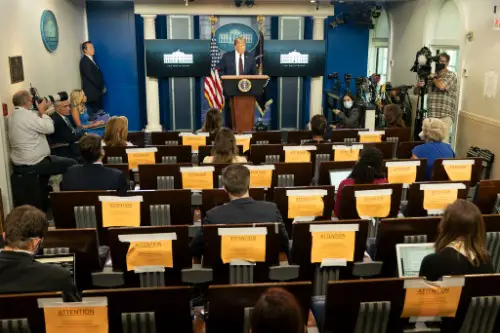
The White House Briefing Room is where much of the public’s information about the administration’s actions is communicated. This space is where the press secretary holds daily press conferences, answering questions from journalists about the administration’s policies and actions. It’s also the setting for some of the most iconic moments in political history, with heated exchanges between the press and the White House staff.
The room itself is equipped with microphones, cameras, and seating for dozens of reporters, ensuring that the public remains informed about the workings of the government. The Briefing Room is designed to handle the fast-paced nature of modern journalism, where breaking news and political crises can emerge at any moment. In this room, the government’s decisions are scrutinized, and the media plays a crucial role in holding the administration accountable.
11. The White House is Built with More Than 500 Doors
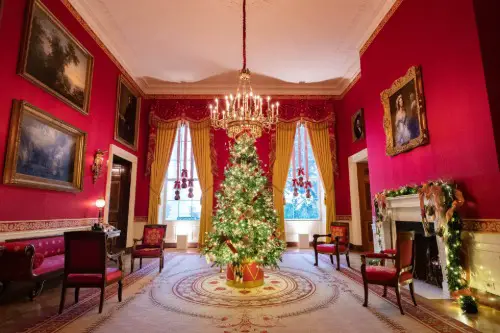
The White House is enormous, spanning over 55,000 square feet. One of the most impressive aspects of this grand building is its sheer number of doors—more than 500 of them, in fact. These doors are spread across different wings and rooms, each serving a specific function in the day-to-day operations of the White House. Some doors are hidden, others are grand entrances for important guests, but all of them contribute to the overall flow and structure of the building.
Interestingly, many of these doors are also historical relics, designed with unique architectural features that reflect the different styles and periods of White House design. The main entrance, for example, leads into the stately East Room, where important ceremonies like presidential inaugurations and receptions are held. The extensive network of doors ensures that the White House can operate efficiently, allowing for both privacy and access as needed during the president’s day-to-day operations.
12. There Are Multiple Kitchens and Dining Rooms in the White House
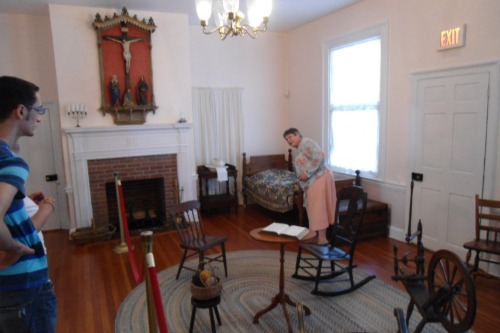
The White House is not only home to the first family but also to a vast network of staff, making meal preparation a complex task. This is why the White House has multiple kitchens and dining rooms designed to accommodate the different needs of the president, their family, and official guests. These kitchens are staffed by a team of chefs who prepare everything from daily meals to large, formal dinners. The staff also caters to the unique dietary requirements of the first family, ensuring that every meal is meticulously crafted.
In addition to the main kitchen, there are smaller, more specialized kitchens that handle everything from baking to preparing specialty dishes for state dinners. The White House’s dining areas include the State Dining Room, which seats up to 140 guests, and the smaller, more intimate Private Dining Room for the first family. Each room and kitchen is equipped with the finest tools and staffed by highly skilled individuals who ensure that every meal is a reflection of American hospitality.
13. The White House Has Its Own Garden
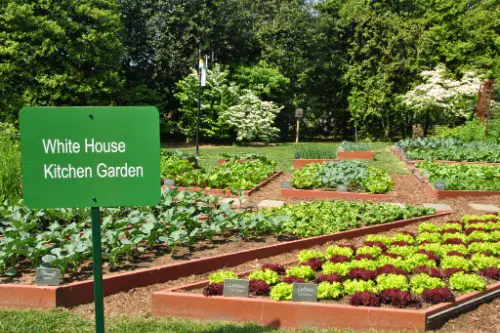
Did you know that the White House has a garden? Not just any garden, but one that provides fresh produce for the first family and the White House kitchen. The White House Kitchen Garden was first established in 2009 during the Obama administration and has since become an emblem of sustainability and healthy eating. The garden is located on the South Lawn and is carefully maintained by a dedicated team.
The garden produces a variety of fruits, vegetables, and herbs, including lettuce, tomatoes, cucumbers, and even pumpkins. It’s a great way to promote healthy eating while also showcasing how the White House embraces environmental responsibility. The garden is used to prepare meals for the first family and occasionally for state events, making it a central part of the White House’s efforts to promote healthy and local food. It’s a quiet but powerful reminder that even the most influential leaders need to stay connected to the land and the earth’s bounty.


